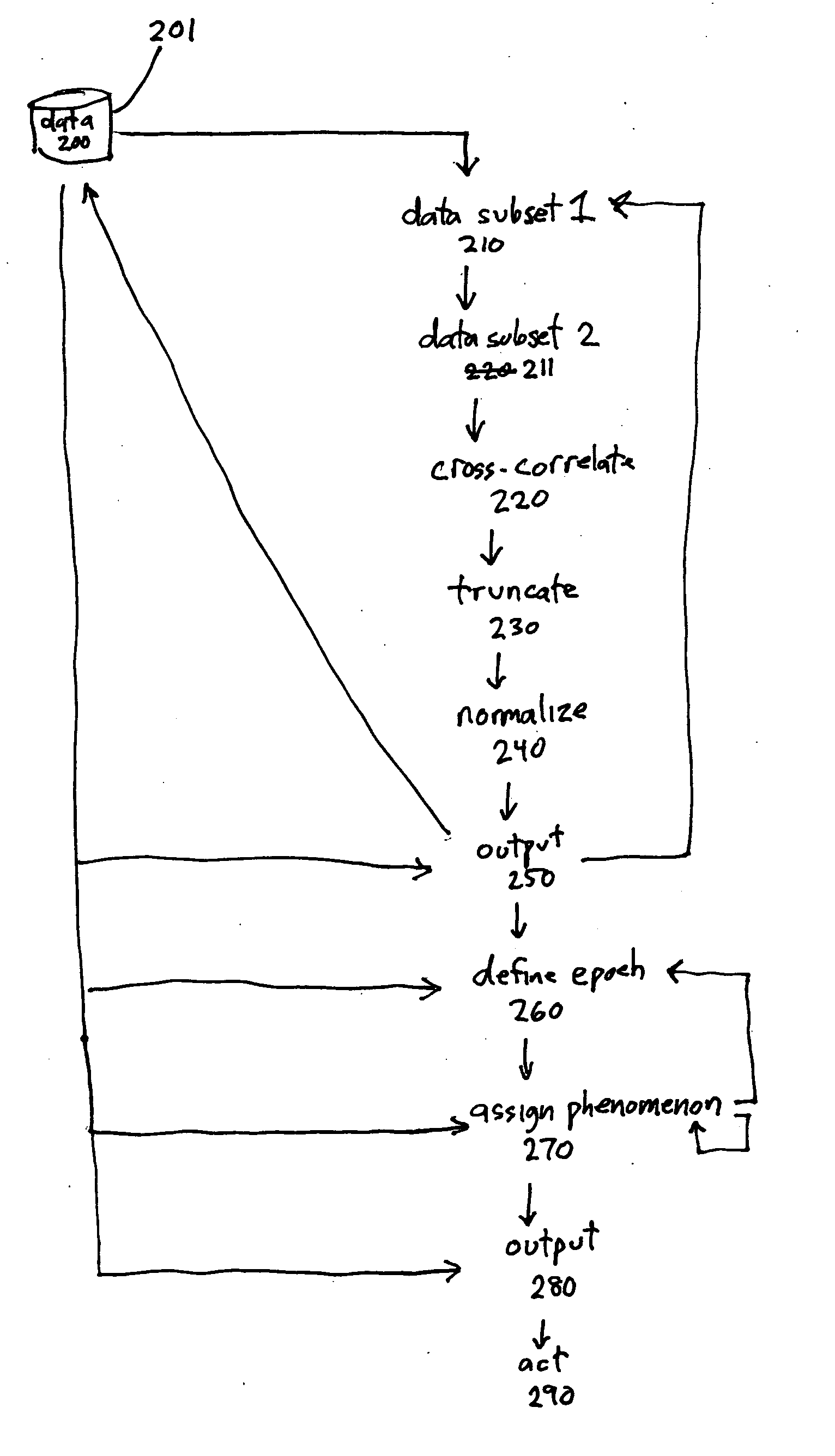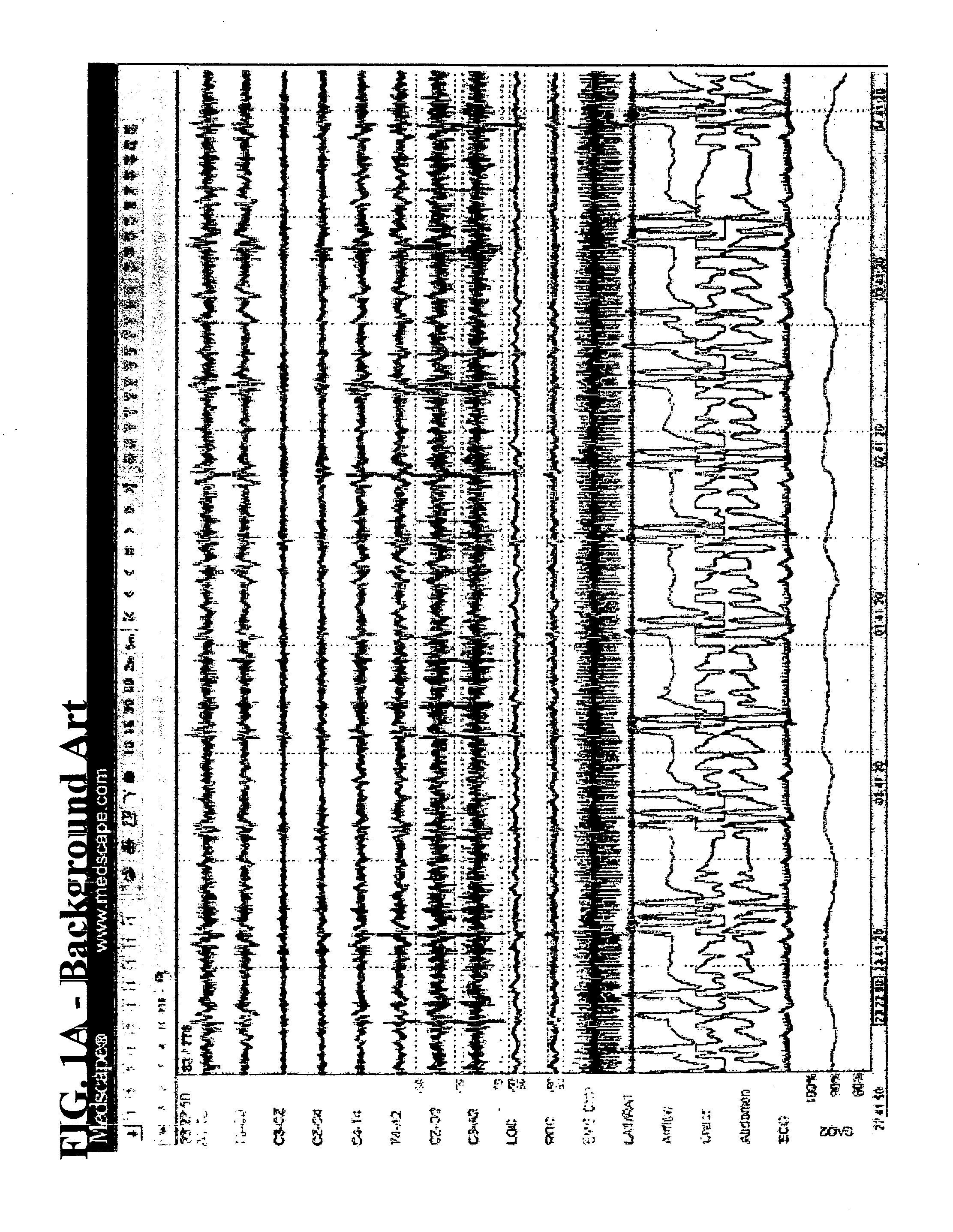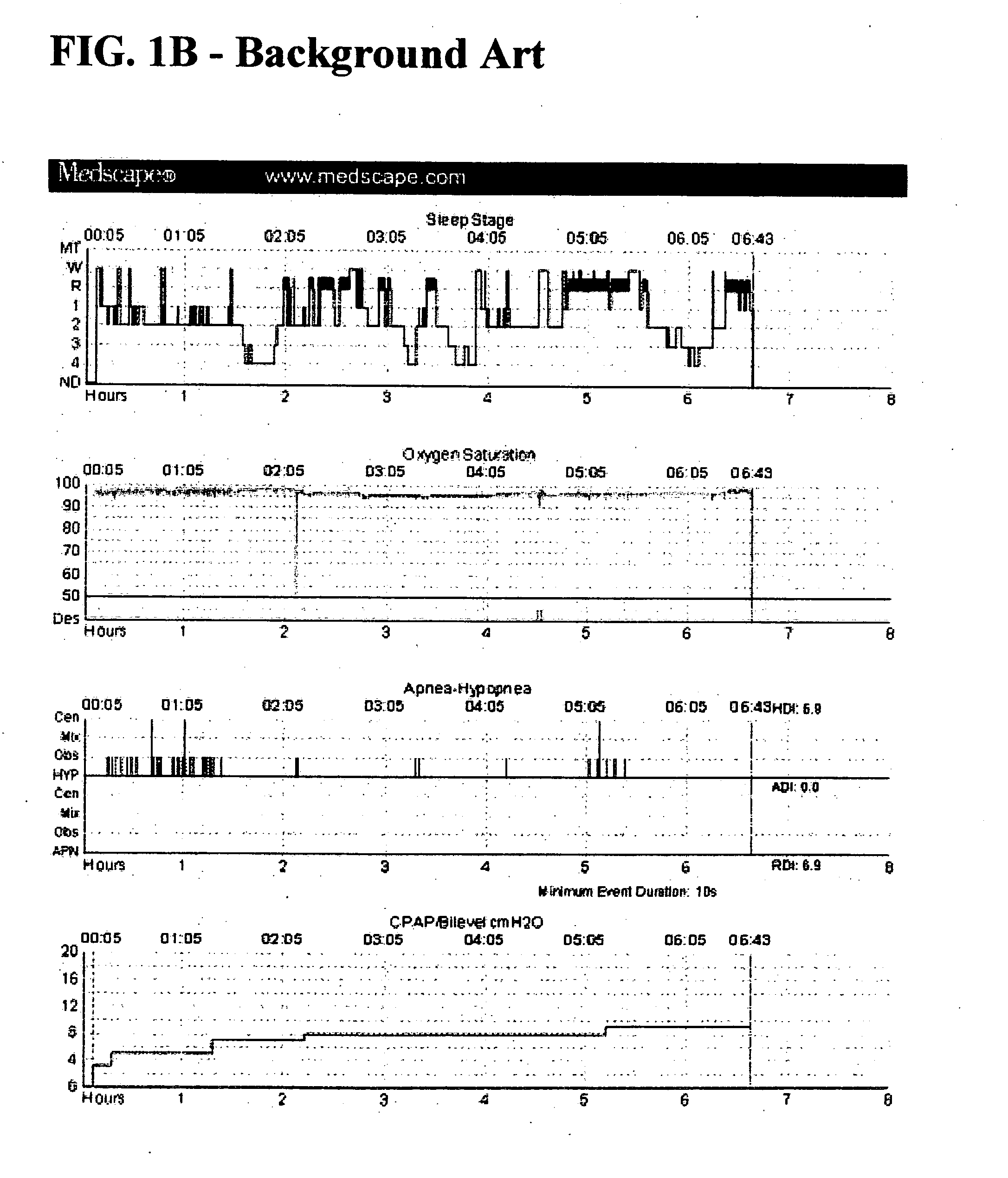System and method for assessment of sleep
a technology of respiratory and sleep, applied in the field of ways of assessing the state of an organism, can solve the problems of large data set, serious threats to health and well-being, and untreatable others
- Summary
- Abstract
- Description
- Claims
- Application Information
AI Technical Summary
Benefits of technology
Problems solved by technology
Method used
Image
Examples
Embodiment Construction
[0032] The present invention generally relates to ways of assessing the state of an organism. More particularly, the invention provides a method and system for assessing respiratory and sleep related phenomena of an organism. Merely by way of example, the invention is applied to assessing breathing during sleep using one or more sensors and computing hardware. But it would be recognized that the invention has a much broader range of applicability, such as applicability to cyclic phenomena (e.g. certain heart functions, among others).
[0033]FIG. 2 shows an embodiment of the present invention. Memory 201 contains data 200 obtained from an organism or the organism's environment. In general, data 200 is expected to reflect a cyclical phenomenon (or phenomena), but there is no requirement that this be so. For example, respiration is generally a cyclical phenomenon, as is contraction of the heart, as are peristaltic contractions, as are various functions labeled “circadian” (e.g. sleep), ...
PUM
 Login to View More
Login to View More Abstract
Description
Claims
Application Information
 Login to View More
Login to View More - R&D
- Intellectual Property
- Life Sciences
- Materials
- Tech Scout
- Unparalleled Data Quality
- Higher Quality Content
- 60% Fewer Hallucinations
Browse by: Latest US Patents, China's latest patents, Technical Efficacy Thesaurus, Application Domain, Technology Topic, Popular Technical Reports.
© 2025 PatSnap. All rights reserved.Legal|Privacy policy|Modern Slavery Act Transparency Statement|Sitemap|About US| Contact US: help@patsnap.com



